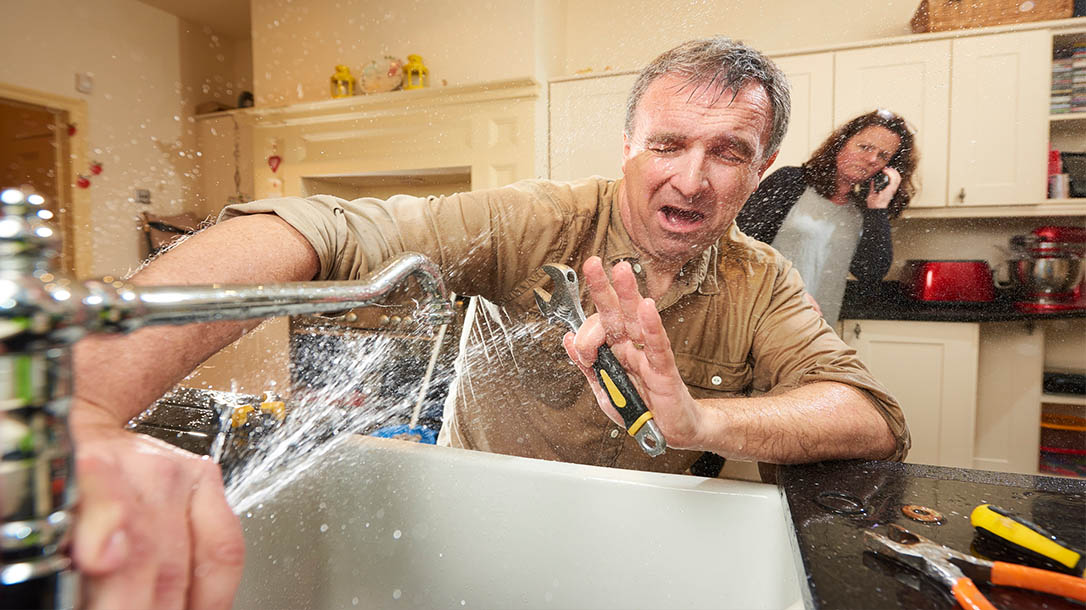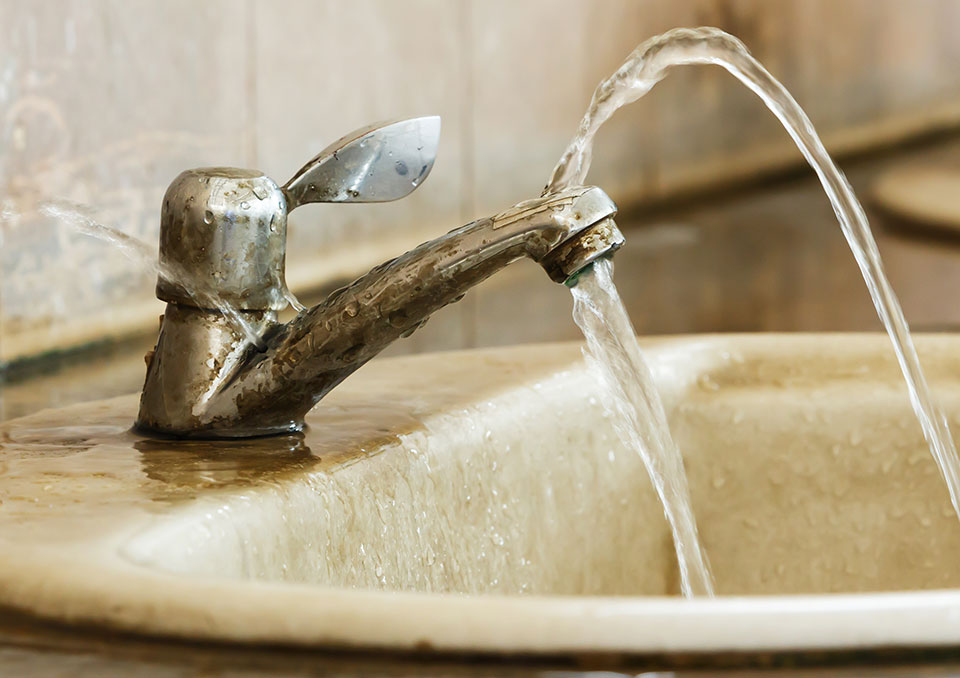They are making a number of great observations on the subject of Leaky Faucets: Why They Happen & What to Do About Them overall in this content on the next paragraphs.

Trickling faucets could seem like a small inconvenience, but their effect surpasses just the aggravation of the noise. From wasting water to sustaining unneeded economic expenses and health and wellness dangers, disregarding a dripping tap can lead to various effects. In this article, we'll delve into why it's essential to resolve this common household problem without delay and effectively.
Wastage of Water
Ecological Influence
Trickling taps add substantially to water waste. According to the Epa (EPA), a solitary tap trickling at one drip per second can squander more than 3,000 gallons of water each year. This not only pressures water sources however additionally affects ecological communities and wildlife based on them.
Financial Expenses
Boosted Water Expenses
Past the environmental impact, leaking faucets can blow up water costs substantially. The gathered wastage gradually converts into higher utility expenditures, which can have been prevented with prompt repairs.
Potential Residential Property Damage
Furthermore, extended leaking can result in damage to fixtures and surfaces bordering the faucet. Water build-up can cause discoloration, deterioration, and even architectural concerns if left unattended, resulting in additional repair work prices.
Wellness Worries
Mold and Mold Growth
The constant presence of wetness from a dripping tap creates an ideal setting for mold and mildew development. These fungi not just jeopardize interior air quality yet likewise pose health and wellness dangers, especially for people with respiratory system problems or allergic reactions.
Waterborne Conditions
Stagnant water in dripping faucets can end up being a breeding ground for bacteria and various other microorganisms, raising the danger of waterborne illness. Impurities such as Legionella microorganisms flourish in stagnant water, possibly causing significant diseases when consumed or breathed in.
DIY vs. Specialist Fixing
Benefits and drawbacks of DIY Repair Work
While some may try to deal with a trickling faucet themselves, do it yourself repair services come with their very own set of difficulties. Without appropriate knowledge and tools, do it yourself attempts can aggravate the issue or lead to insufficient repair work, prolonging the trouble.
Benefits of Working With a Specialist Plumber
Working with a professional plumber guarantees that the underlying cause of the trickling tap is resolved efficiently. Plumbing technicians have the know-how and tools to identify and repair faucet problems successfully, conserving time and minimizing the risk of further damages.
Step-by-Step Overview to Taking Care Of a Dripping Faucet
Tools Required
Prior to trying to deal with a leaking tap, gather the essential tools, including an adjustable wrench, screwdrivers, substitute components (such as washers or cartridges), and plumber's tape.
Common Faucet Issues and Their Solutions
Recognize the type of tap and the specific issue creating the drip. Usual issues consist of worn-out washing machines, corroded shutoff seats, or damaged O-rings. Describe manufacturer guidelines or on the internet tutorials for detailed advice on repair services.
Safety nets
Routine Maintenance Tips
To stop dripping faucets, do routine maintenance such as cleaning up aerators, inspecting for leakages, and changing worn-out components promptly. Additionally, consider setting up water-saving gadgets or updating to extra reliable fixtures.
Relevance of Prompt Fixes
Attending to leaking taps as quickly as they're observed prevents more water waste and possible damages, ultimately saving both water and money in the future.
Effect On Home Worth
Understanding of Well-Maintained Home
Preserving a residential property in good condition, including attending to maintenance issues like dripping taps, boosts its perceived worth and desirability among potential purchasers or lessees.
Influence on Resale Worth
Residences with well-kept plumbing fixtures, including faucets, command higher resale worths in the property market. Dealing with trickling taps can contribute to a favorable impact throughout residential or commercial property assessments and arrangements.
Ecological Duty
Specific Payment to Conservation
Taking responsibility for repairing dripping faucets lines up with wider efforts toward water conservation and ecological sustainability. Every individual's actions collectively make a significant influence on maintaining valuable resources.
Lasting Living Practices
By prioritizing timely repair work and adopting water-saving behaviors, people add to sustainable living practices that profit both present and future generations.
Verdict
Dealing with a dripping tap goes beyond simple convenience; it's a crucial step toward saving water, decreasing monetary prices, and guarding wellness and home. Whether through DIY fixings or professional aid, taking action to fix leaking faucets is a tiny yet impactful means to advertise accountable stewardship of resources and contribute to a healthier, more lasting future.
Why Are My Faucets Dripping (And Can I Fix it Myself)?
Causes of a Dripping or Leaking Faucet
Whether you’re hearing drops of water falling and hitting a sink, or noticing water ooze out from the base of the spout, you shouldn’t ignore a dripping or leaking faucet. And, the good news is, sometimes you can fix the problem yourself.
In this article, we’ll review a few common causes of dripping and leaky. We’ll also walk you through some basic ways to find the problem and handle it without calling anyone — and let you know when to call in a pro.
But, no matter what the cause, or whether you can handle it on your own, the sooner you address it, the better.
Each drip may be a tiny amount of water. But, they all add up quickly. According to the U.S. Geological Survey, one faucet losing one drop every 20 seconds — five a minute — wastes around a liter of water every day, and 173 gallons a year.
Add in more than one in your house, and it’s a lot of water to waste. So, we’ll help you get to the bottom of things quickly.
Four Reasons Your Faucet May Be Dripping
Aerator is Damaged or Unseated Valve Seat is Corroded O Ring is Loose or Worn Out Part of the Assembly is Loose Aerator is Damaged or Unseated
If you unscrew the end of your faucet, you’ll find the aerator. It’s the little stem piece with a screen on it that shuts off the water circulation.
If it’s damaged, or if it’s not sitting right, it will allow water to pass through.
Valve Seat is Corroded
Next is the valve seat, which is connected to the washer. If the washer wasn’t in place correctly, then it could have ground against the seat. Over time, this damages the valve seat.
The problem could also be corrosion: Over time, the part has worn out, and it’s now allowing water to pass through.
O Ring is Loose or Worn Out
Since the o ring is only a small rubber gasket, it’s a common reason why the faucet is dripping. You’ll find it at the base of the faucet, and it’s there to keep water from coming out where it’s not supposed to.
However, it’s common for the o ring to wear out over time. When it does, you’ll notice a drip.
Part of the Assembly is Loose
So far, we’ve looked at a few small, specific parts. But, the problem could be anywhere in the assembly if something’s out of place.
Even if a part isn’t damaged, over time, it may have become loose or dislodged. It could be the parts we mentioned, or the aerator at the tip of the faucet, the stem itself,
Can I Fix a Leaky Faucet Myself?
Depending on the problem, and how handy you are, there’s a chance you can fix a leaky faucet without calling a professional. But, you do run the risk of making the problem worse.
If it’s a small drip, you can certainly try a few troubleshooting tactics. We’ll walk you through them in a moment.
But, no matter what, your first step should be shutting off the water coming into the faucet. You should find a shutoff valve under the sink on the pipes leading to it. Turn each one clockwise until they close tightly.
Next, make sure you have the right tools for whatever you’re attempting. It’s tempting to make do with what you have. But, you need the right ones for a reason: You’re often dealing with small parts that can break if you handle them carelessly.
If you’re feeling confident, here are some places to start.
Items Near the Tip of the Faucet
A few of the parts we mentioned — particularly the valve seat and washer — are located at the tip of the faucet where the water comes out. They’re easy to access, making it a good place to start.
Check the O Ring
To check the o ring, you’ll need to take off the spout at the base. It’s easiest on kitchen sinks with long spouts, versus the smaller, bulkier base on most bathroom sinks.
Either way, this can be tricky, so do it carefully and don’t force anything. If it’s not coming right off, you’re much better off calling in a pro than possibly breaking something.
For a kitchen sink, there’s usually a nut or coupling assembly at the base of the spout. These often slide off easily without using any tools.
Once you’ve disassembled those parts, gently but forcefully twist off the spout.
Then, you can see the o rings. There should be two of the rubber gaskets on the base. If they look worn or damaged, replace them, and see if that solves the problem.

I ran across that write up on Leaky Faucets: Why They Happen & What to Do About Them when scouting around the web. Liked our posting? Please share it. Let others find it. Thank you for being here. Please come visit our blog back soon.